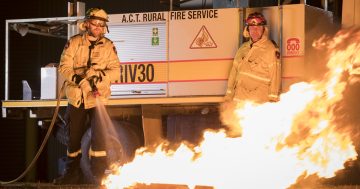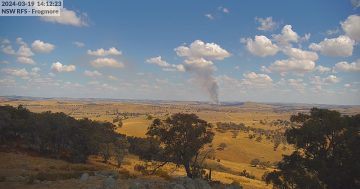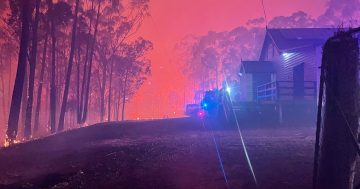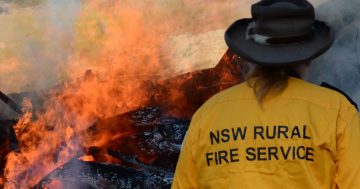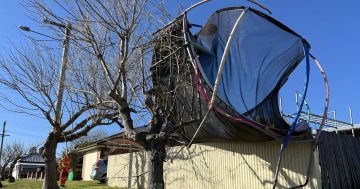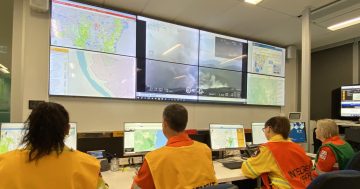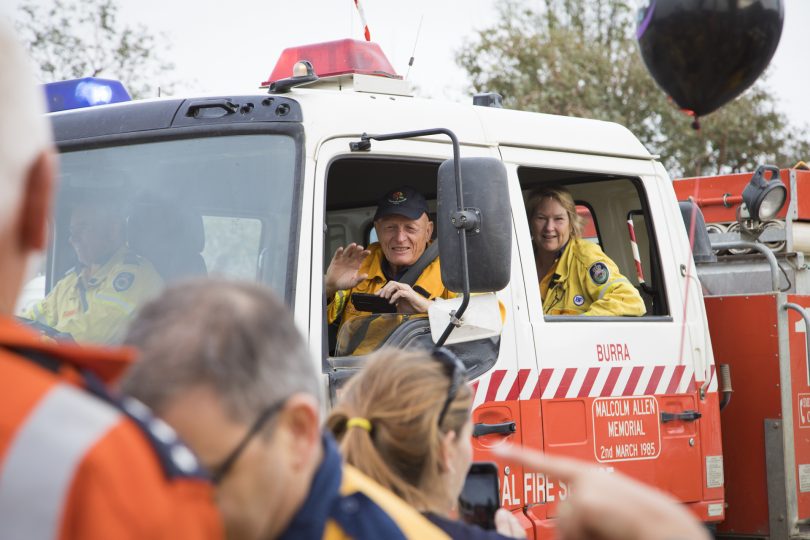
Members of the Burra Rural Fire Service during the dedication of the Bungendore fridge to the National Museum. Photo: Michelle Kroll, Region Media.
A large tree burned in a remote area of the Namadgi National Park this week as the 2019-20 bushfire season officially ended yesterday (31 March).
The tree was extinguished by members from the ACT Rural Fire Service, but it served as a stark reminder that the bushfire season, that began on 1 October, was one of the most devastating in history.
Both the ACT Emergency Service Agency (ESA) and the NSW Rural Fire Service (RFS) marked the end of the bushfire season by thanking its members and the community during an extremely challenging season.
RFS Commissioner Shane Fitzsimmons said all emergency services personnel, especially NSW RFS members, had given so much, spending time away from their families, jobs and loved ones.
“We must also be mindful of all those still enduring the very raw and difficult recovery process as a result of the fires and that those efforts are sustained through this very personal challenge,” he said.
ESA Commissioner Georgeina Whelan said bushfire, smoke haze, hail storms, heatwaves and 24 total fire ban days made the 2019-20 bushfire season the ACT’s most difficult yet.
“ESA would like to thank the community for helping to keep fire out of the landscape, for following our warnings and information updates, and for looking out for each other,” Ms Whelan said.
Despite the end of the fire season, the Namadgi National Park remains closed until further notice. The burning tree, found by ACT Parks and Conservation rangers in a remote area of the Park, highlights the enduring dangers.
ACT Parks and Conservation said on its Facebook page that the fire had been “stewing away” inside the tree since the Orroral Valley fire, but had been kept at bay by mild weather conditions.
“The recent wind and warmer weather helped the fire to flare up. Members from the ACT Rural Fire Service quickly responded and extinguished the fire; however, it is another timely reminder why Namadgi is closed,” ACT Parks and Conservation said.
Our rangers found a burning tree this week in #Namadgi. The fire was stewing away inside the tree since the Orroral Valley fire, kept at bay by the mild weather conditions. The recent wind and warmer weather helped the fire to flare up. Members from the ACT Rural Fire Service quickly responded and extinguished the fire, however it is another timely reminder why #Namadgi is closed. Stay home – stay safe everyone. ACT Emergency Services Agency
Posted by ACT Parks and Conservation Service on Thursday, March 26, 2020
The end of the bushfire season also means that from 1 April, fire permits will no longer be required for rural landholders wishing to conduct burns although landholders are still asked to notify authorities if they plan to undertake burns. Penalties apply if fires are left unattended or escape containment.
In NSW, RFS Commissioner Shane Fitzsimmons said this season had been unprecedented in terms of conditions experienced, the loss of lives and property, and the threat to communities across large parts of NSW.
Crews responded to more than 11,400 bush and grass fires that burnt more than 5.5 million hectares, the equivalent of 6.2 per cent of the state.
“Fires this season have destroyed 2,448 homes; however, the great work of firefighters saw 14,481 homes saved,” Commissioner Fitzsimmons said.
He also paid tribute to the 25 lives that were lost, including three NSW RFS volunteers and three US aerial firefighters.
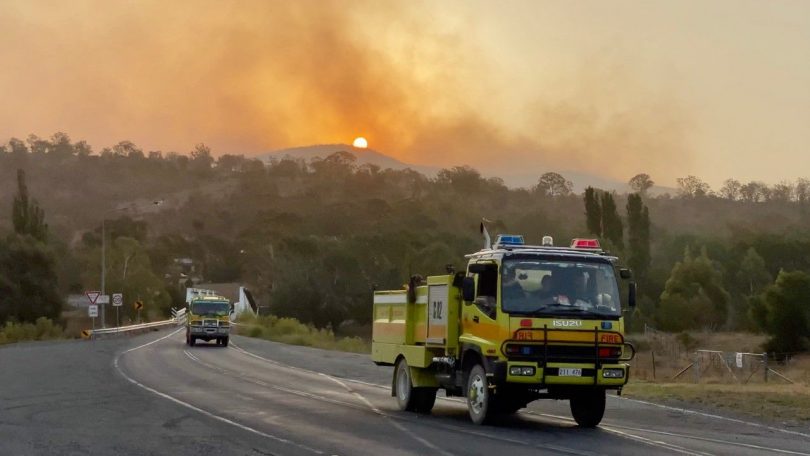
ACT Fire and Rescue crews leave the Orroral Valley fire near Thawra earlier this year. Photo: Gary Hooker.
Agencies involved in the combined response included Fire and Rescue NSW and ACT, National Parks and Wildlife Service, ACT Parks and Conservation, Forestry Corporation NSW, the State Emergency Service, Police, Ambulance and the Australian Defence Force.
Fire services from all across Australia also joined the international response and assistance from Canada, the United States and New Zealand.
The official end to the bushfire season comes as the author of Australia’s Annual Environment Report, Professor Albert van Dijk from the Australian National University, said the current coronavirus pandemic offers a model of how humanity can tackle the threat from bushfires.
“The COVID-19 crisis shows that we can take the local and global actions necessary once society understands the seriousness of a threat.
“Climate change is, in many ways, similar. It happens slower, but it also poses an existential threat – we already saw massive impacts last year. Acting now can save a lot of pain later,” Professor van Dijk said.
Commissioners Whelan and Fitzsimmons also said preparation will prevent a repeat of last season’s devastation.
“While the focus now for all of us is rightly on the coronavirus response effort, the next bush fire season will begin in only a matter of months, so keep your property prepared and have your bush fire survival plan up to date and discussed with those in your family and household,” the Commissioner Fitzsimmons said.
Commissioner Whelan said the ESA is undertaking an after-action review to consider what improvements can be made to bushfire preparedness and responses in preparation for the 2020-21 bushfire season.












